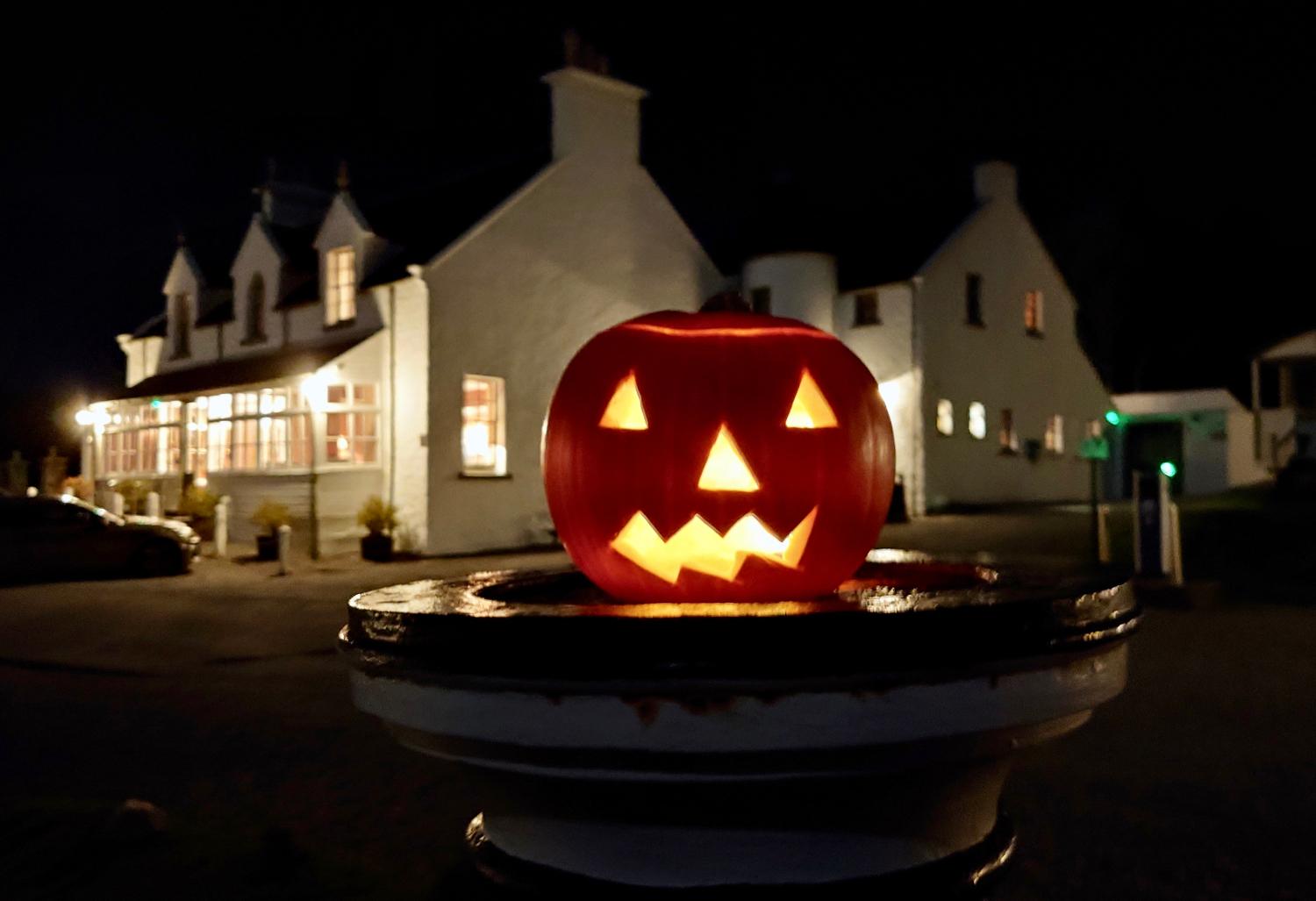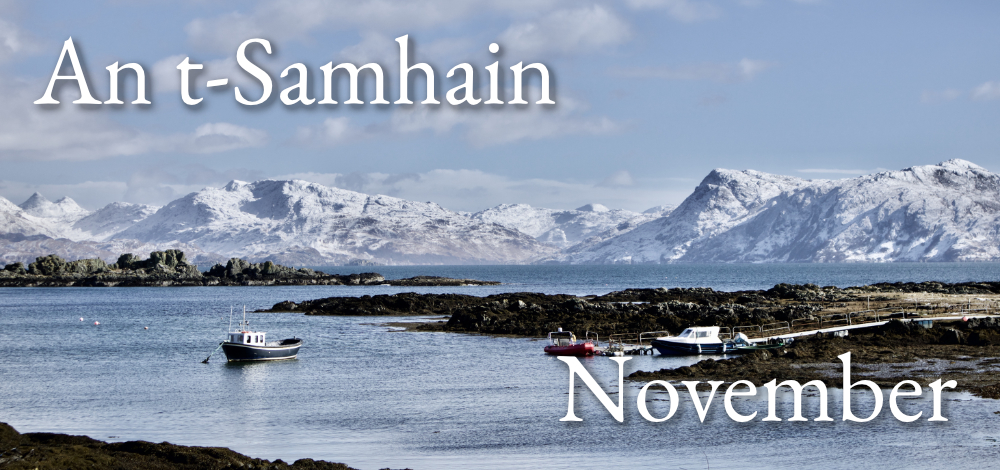November marks the end of the Celtic summer and the beginning of winter with An t-Samhain being the Gaelic word for the month and this time of year. This relates to the seasonal transition that was marked with the festival of Samhainn (pronounced soween – ‘sow’ as in the female pig!) – the first of November and Oidhche Shamhna, which means Samhainn’s night or eve, or as it is more commonly known as ‘Halloween’! This word means ‘summer’s end’, coming from the Gaelic samhradh for summer and the old Gaelic word fuin meaning ‘end’. Interestingly, this festival day was opposed to the celebrations on the 1st of May, which we commonly know as May Day, but in Gaelic this is known as Bealtainn and marked the start of summer in the Celtic calendar. Every year for Oidhche Shamhna we have a traditional celebration in our Am Pràban bar in the hotel with traditional music and staff and customers donning various entertaining costumes. This year was another busy and successful night for the hotel and it is great to see that this local custom continues at Eilean Iarmain.
Another seasonal date that was traditionally marked each year in November is Là Fhèill Màrtainn or ‘Martinmas’, as it’s known in English, (the feast day of St Martin of Tours), which is on the 11th of November. This was also known as the ‘Old Halloween’ in many places in Scotland and was also a significant day in the agricultural calendar being one of the old Scottish quarter days, which marked the beginning or ending of a farm tenancy and also periods of farm employment. Here is Skye, this is traditionally the day that crofters pay their annual rent!
Of course the 11th of November also marks Armistice Day, which has great significance in the Highlands and Islands as it has elsewhere. It is said that the Highland regiments suffered the highest casualty rates in the British Army in the First World War such was the scale of loss in the Highland communities. Unfortunately, this is why in Skye, you will see war memorials filled with names throughout the island.
We end the month with Là Naomh Anndra or St Andrew’s Day on the 30th of November. St Andrew is of course Scotland’s patron saint although he was born in Bethsaida, Galilee in modern day Israel and believed to have been one of Jesus’ disciples. He is said to have been crucified in an X shape, declaring beforehand that he was not worthy to be executed in the same way Jesus had been. Legend has it that his remains were carried from Patras in Greece to Scotland in the 4th century by St Regulus and buried at Kilrymont in Fife after being shipwrecked off the east coast of Scotland. Kilrymont comes from the Gaelic, Cill Rìmhinn and is the original name for modern day St Andrews!



